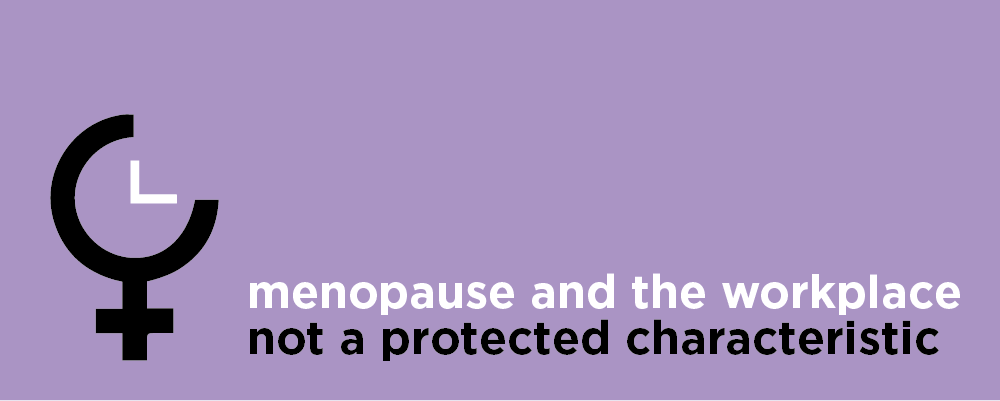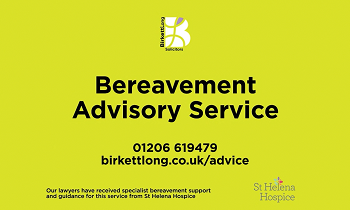- Basildon 01268244144
- Chelmsford 01245453800
- Colchester 01206217300
- London 020 4586 1280
Menopause and the workplace - not a protected characteristic

The Minister for Work and Pensions (Lords) and Minister for Women has confirmed that the government is not currently planning to introduce menopause as a protected characteristic under the Equality Act 2010 or to implement dual discrimination.
The government will, however, consult with organisations such as the Equality and Human Rights Commission and the Advisory, Conciliation and Arbitration Service (Acas) to assess whether current guidance on the menopause adequately reflects the growing body of tribunal caselaw and good practice. It will also consider whether improvements can be made to increase employer and employee understanding of the law.
Most women experience symptoms of menopause between the ages of 45 and 55 years. Symptoms can include; low mood; anxiety; hot flushes; fatigue; poor concentration; muscle and joint pains; headaches and migraines and sleep disturbance. These symptoms can last for a lengthy period of time, in some cases years, and whilst not all women suffer from symptoms of the menopause, for some, the symptoms can be particularly severe.
Statistically, the proportion of older women in the workforce is higher than ever before through a combination of reasons such as (but not limited to) the increase in State pension retirement age for women to 65 from 2018, increased life expectancy amongst the population, the continued effects of the Covid-19 pandemic and, more recently, higher costs of living.
With more staff in the workplace that may be affected by symptoms of the menopause, employers need to be wary that if they fail to support or manage employees who are going through the menopause in a fair way, then they risk claims for constructive and unfair dismissal as well as discrimination on the grounds of age, sex and/or disability.
Employers should also be aware that menopausal symptoms are not strictly limited to ‘older women’. There can be non-stereotypical situations where an employer will be expected to act with care and discretion. Examples of these types of less common situations can include:
- Employees who may have or experience menopausal symptoms much earlier than expected. Employers should not be quick to make assumptions based on age.
- Lesbian, bisexual or transgender employees who are in same-sex relationships may have exacerbating circumstances where both parties in the relationship suffer symptoms at the same time.
- Transgender employees may experience menopausal symptoms where their ovaries remain and they are not under any hormone treatment. They may also experience surgical menopause if they undergo a hysterectomy. Trans women may experience pseudo-menopausal symptoms if they cease hormonal treatment or their hormone levels are unstable.
- Employees who have existing disabilities or health conditions may be impacted differently and may have complex needs.
- We encourage employers to be proactive and avoid adopting a ‘blanket’ approach to these scenarios, especially in circumstances where an individual’s protected characteristic may have some influence. One key point to remember is that no two experiences will be the same and menopausal symptoms can affect individuals in a different number of ways.
What can employers do to help ‘manage the menopause’?
- Develop and implement a menopause policy. Listen to the views and consult with your existing employees so that you can gain an understanding of the key issues and their experiences.
- Carry out risk assessments which include consideration of staff going through the menopause.
- Talk about the menopause as a workplace issue and eliminate embarrassment which is normally associated with topics such as this.
- Train managerial staff so that they are able to have supportive conversations with staff.
- Think about small things which can make a difference, for example, installing air conditioning or windows in the workplace or allowing additional breaks.
- Consider making reasonable adjustments where you can and it would be beneficial for both employee and employer. For example, changes to the working environment such as permitting working from home or being flexible with hours or duties.
- Consider Acas guidance on supporting staff who are going through the menopause.
Whilst not everyone who goes through the menopause will be disabled for the purposes of the Equality Act 2010, there will be some individuals who experience symptoms which do have a significant and negative impact on their ability to do normal day-to-day activities and they will be protected by the Act. Employees who are treated less favourably due to their menopausal symptoms could seek to claim discrimination on the basis of their age, disability, gender reassignment or sex.
If you have any queries about menopause and the workplace, then please do not hesitate to contact Charlotte Holman on 01268 244150 or charlotte.holman@birkettlong.co.uk who would be happy to assist you further.


Comments